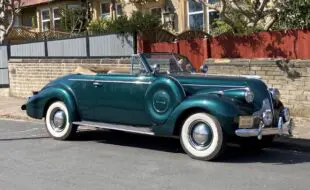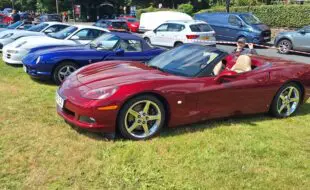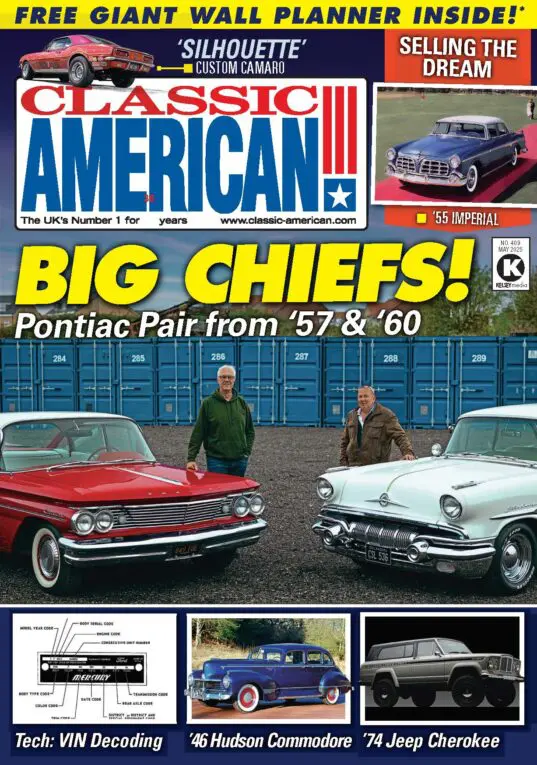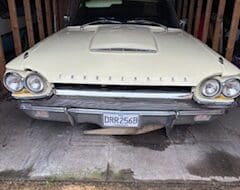Geoff Carverhill concludes his look at American cars at the Earls Court Motor Show during the Sixties, with photographs from the Steve Miles Collection and the files of Autocar.
Words: Geoff Carverhill Images: Steve Miles Collection and Autocar.
By 1968, American cars were starting to get a fairer hearing from the notoriously conservative British motoring press, but it was all a bit too little, too late, as the demand for big, powerful North American motors started to dwindle with the first signs of a recession showing since the war. Cars such as the Ford Mustang, Chevrolet Corvette, Camaro and Rambler Classic were put forward as practical alternatives to British and European cars on offer, but policy changes by the US manufacturers and new British type approval regulations which were starting to be introduced would make US models more difficult to import.
Enjoy more Classic American reading in the monthly magazine.
Click here to subscribe & save.
This in turn affected the number of suitable models that could be made available in the UK. Initially, bias-belted tyres were being replaced by Dunlop SP radials, window glass had to be to a particular specification and lights had to be ‘E’-marked, but by 1974, type approval regulations would outlaw all but a small handful of American-built models for the UK market. As a visitor to the London Motor Shows between 1968 and 1970, however, there was still plenty to get excited about, especially if you were an American car fan like Steve Miles, who enthusiastically photographed as many American and Canadian-built cars as he could while visiting the Earls Court Motor Shows that were held every year in October.
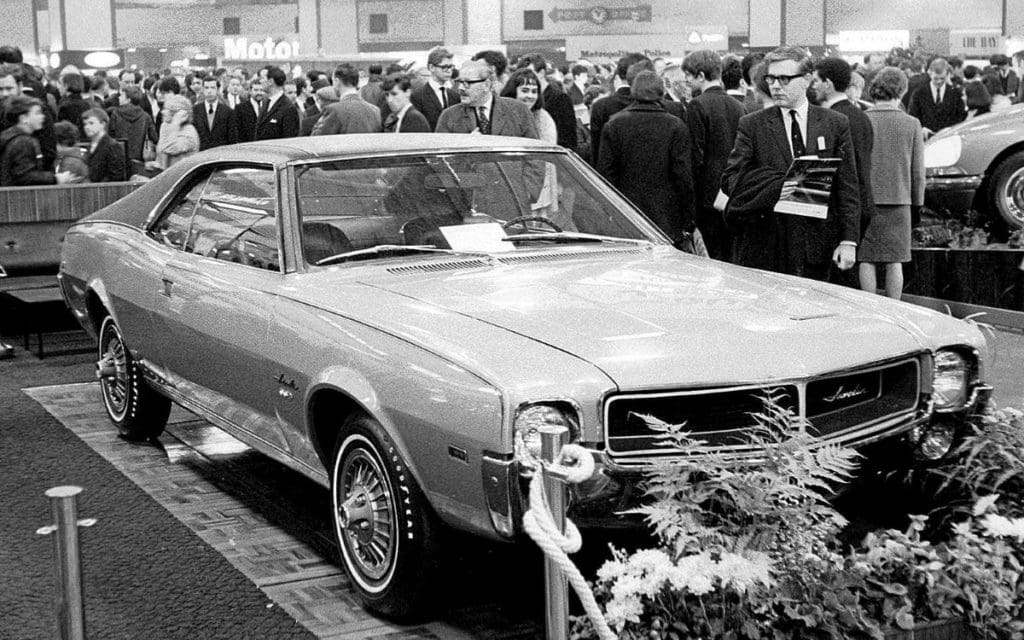
On the Rambler stand 122 at the 1967 Earls Court Show – the 1968 Rambler Javelin, AMC’s newly introduced entry into the pony car market that was already dominated by the Mustang and Camaro. The AMX was also available alongside the Javelin. AMC was now offering a much larger range of vehicles – the compact American, intermediate Rebel, full-size Ambassador – and now, with the Javelin and AMX, the company was attempting to compete with GM and Ford in all segments, a move which ultimately would prove to be AMC’s undoing.
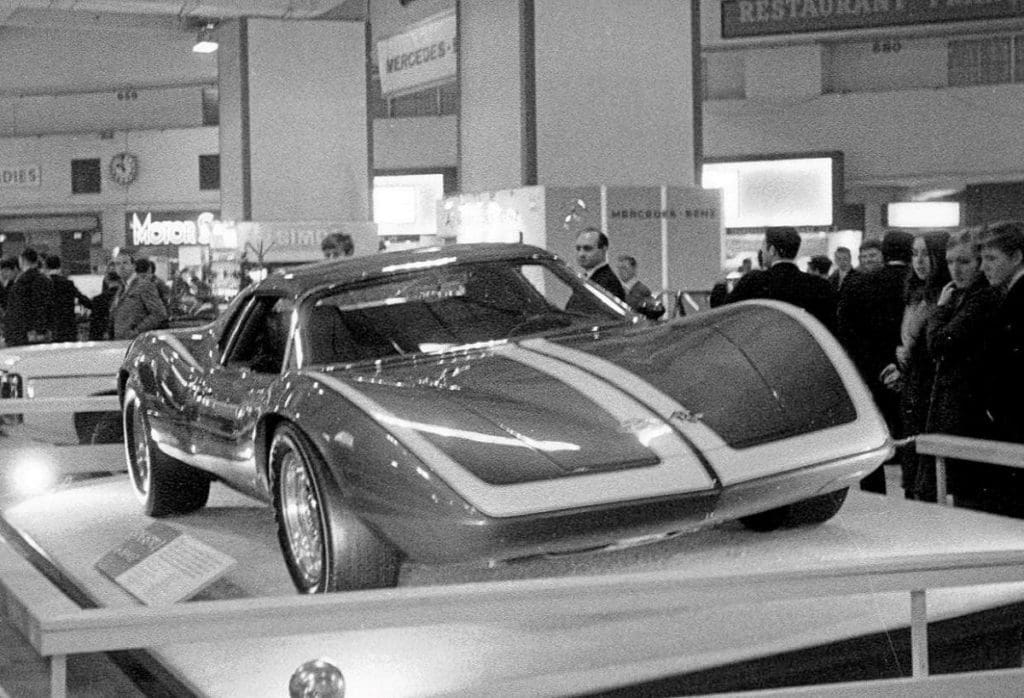
For the 1968 show, on the Buick, Cadillac and Chevrolet stand 131 at Earls Court, GM exhibited the Chevy Astro concept car. General Motors was always keen to show concept or experimental cars at motor shows. Ever since the 1955 Motorama, which exhibited concepts like the Nomad Wagon, Buick Wildcat and La Salle, GM would offer the public a glimpse into the future. In 1966, the Mako Shark II concept did the rounds, including the New York Motor Show and Detroit, before moving to Paris and on to Earls Court, London. The Mako Shark was surprisingly similar to the production Corvette that was launched in the autumn of 1967.
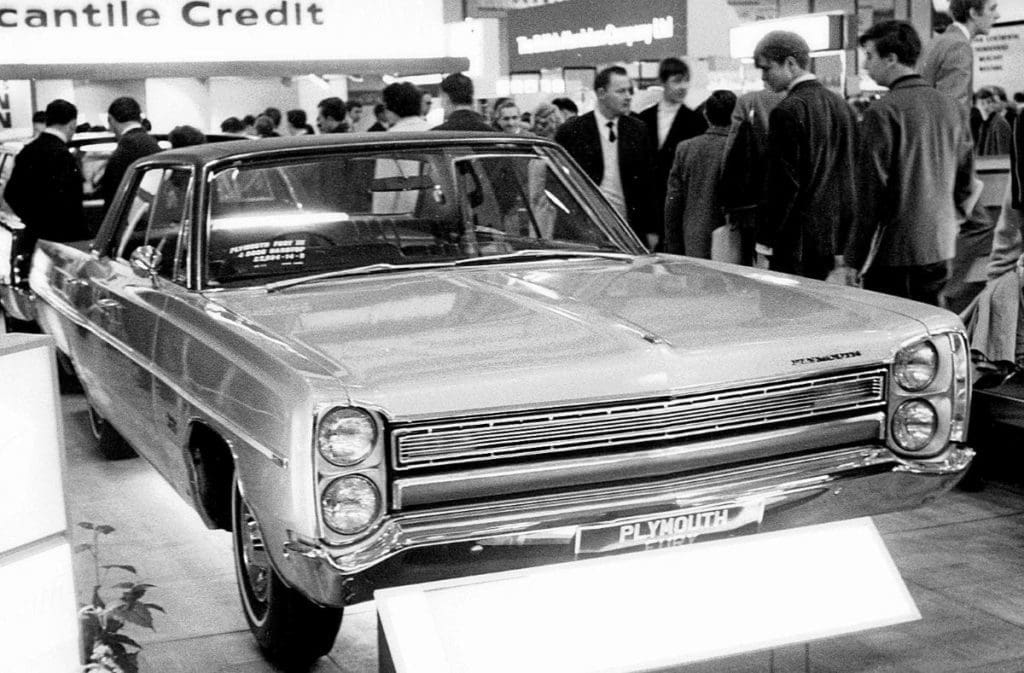
With Chrysler’s takeover of the British Rootes Group in 1967, the 1968 model year was the last year for the Canadian-built right-hand-drive full-size offerings like this Plymouth Fury III four-door sedan (saloon). Subsequent right-hookers for 1969 would be the Australian-built Chrysler Valiants, sold through the nationwide Rootes Group dealer network.
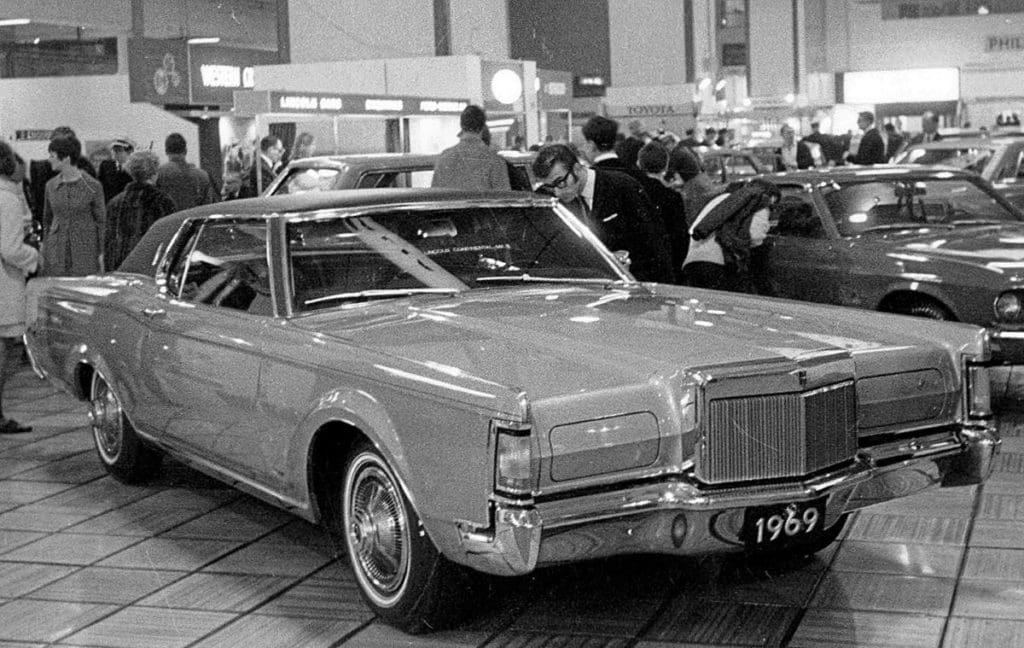
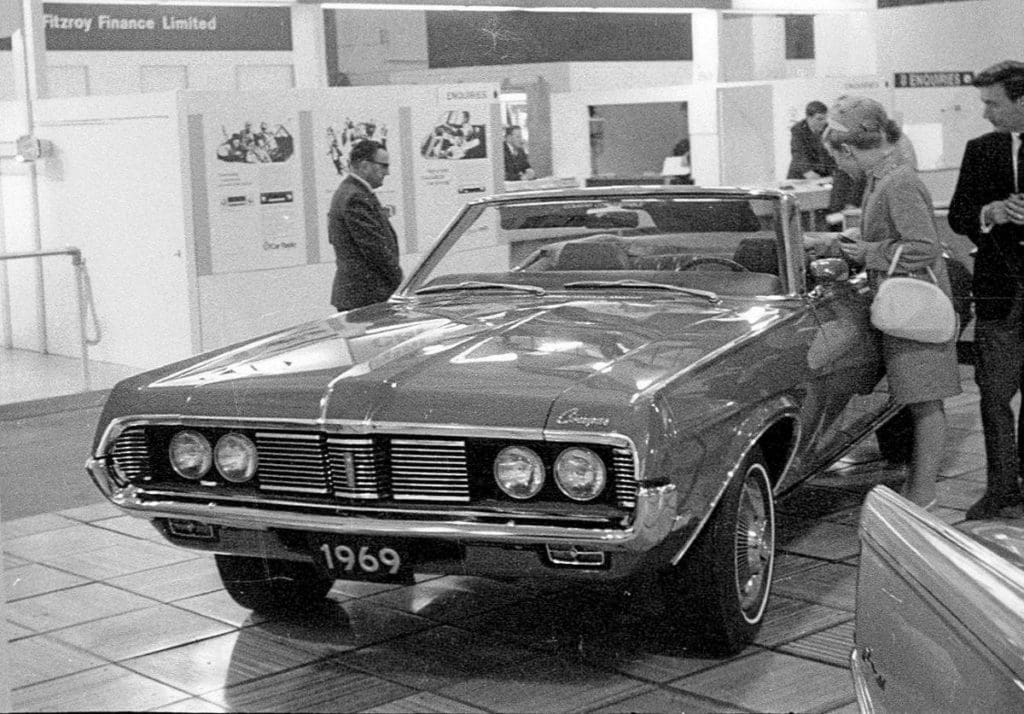
Although Ford had stopped manufacturing Canadian-built right-hand-drive models for the UK by 1967, the demand for the Mustang, Lincoln Continental and the Mercury Cougar was still strong, and these were the principal models on the Lincoln Cars stand 97 at the 1968 Show. However, with fewer models on offer, volume sales were lower and the overheads associated with the Lincoln Cars Ltd premises meant that downsizing was essential.
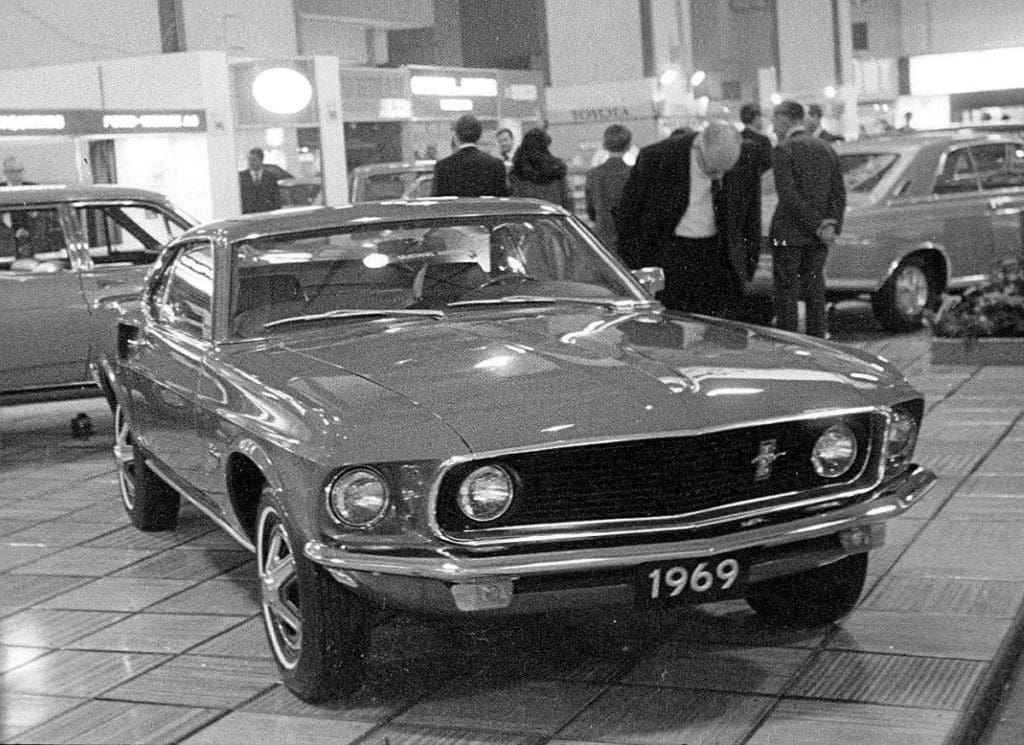
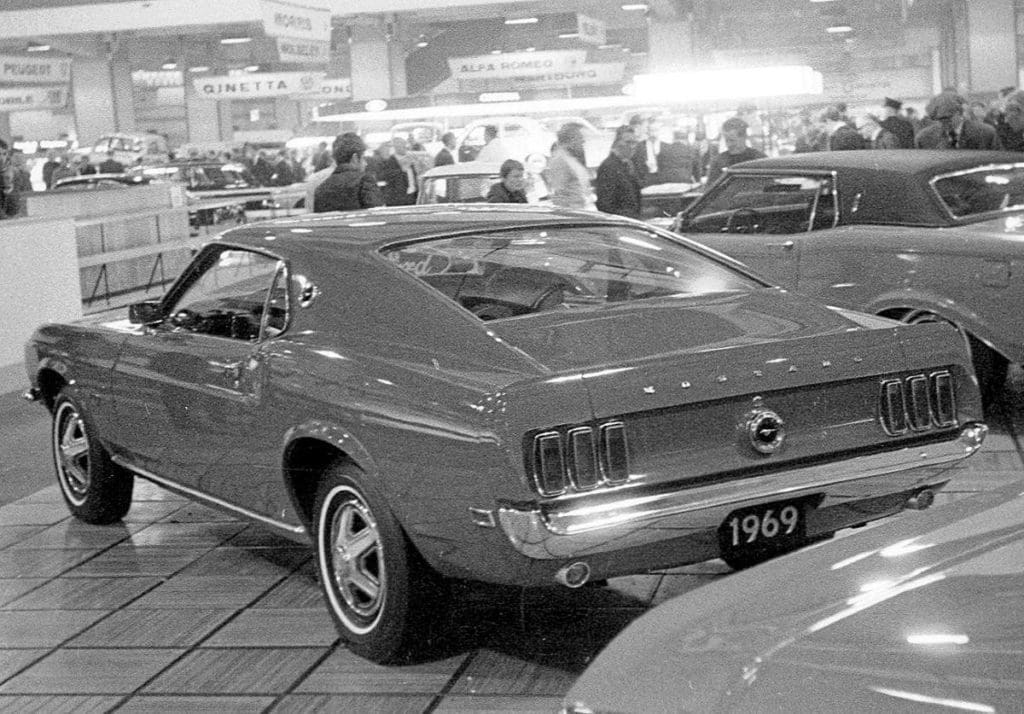
In June 1967, the parts and service department was moved to Slough Trading Estate in Berkshire and the sales department to the showroom at Ford’s ‘Export Sales’ office in 88 Regent Street, in London’s West End. In an effort to replace the Canadian-built models, Ford decided to bring in Australian-built right-hand-drive models from the spring of 1967. However, there was still a demand for American and Canadian Fords, so from 1969 Galaxie/LTD models were Canadian sourced, but converted to right-hand drive by Ford Australia.
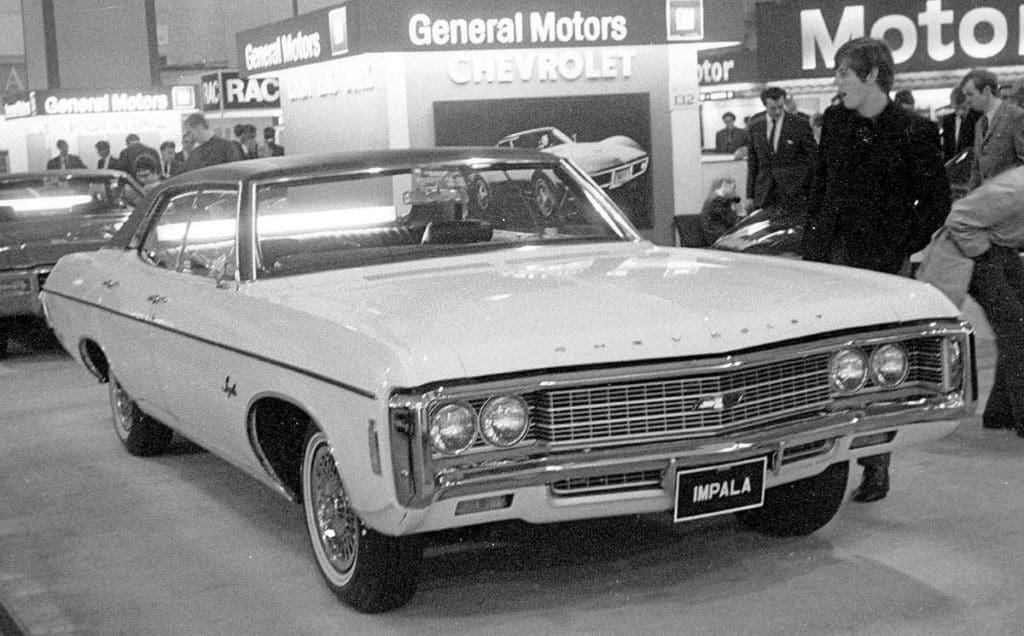
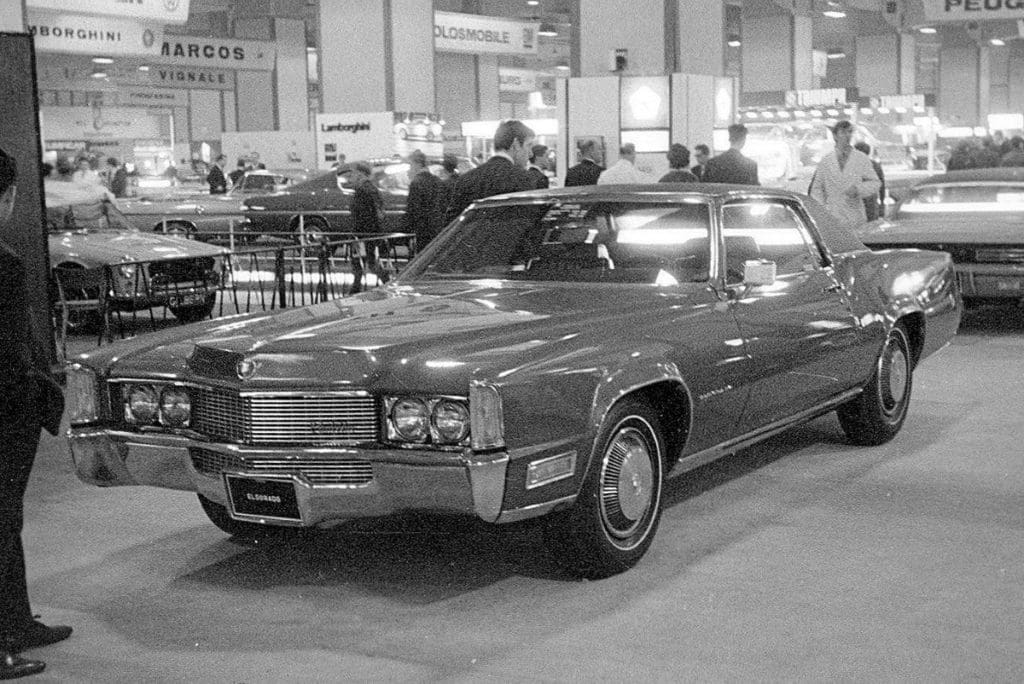
A ’69 right-hand-drive Chevrolet Impala Sport Sedan, ’69 Cadillac Fleetwood Eldorado, a Buick Skylark Convertible and a Riviera were crammed on to the Buick Cadillac Chevrolet stand, with the new ‘Star’ of the GM show, the Pontiac Grand Prix Sport Coupe getting a lot of admiring glances from all who strolled past the Pontiac stand 130 at the 1968 Earls Court Show.
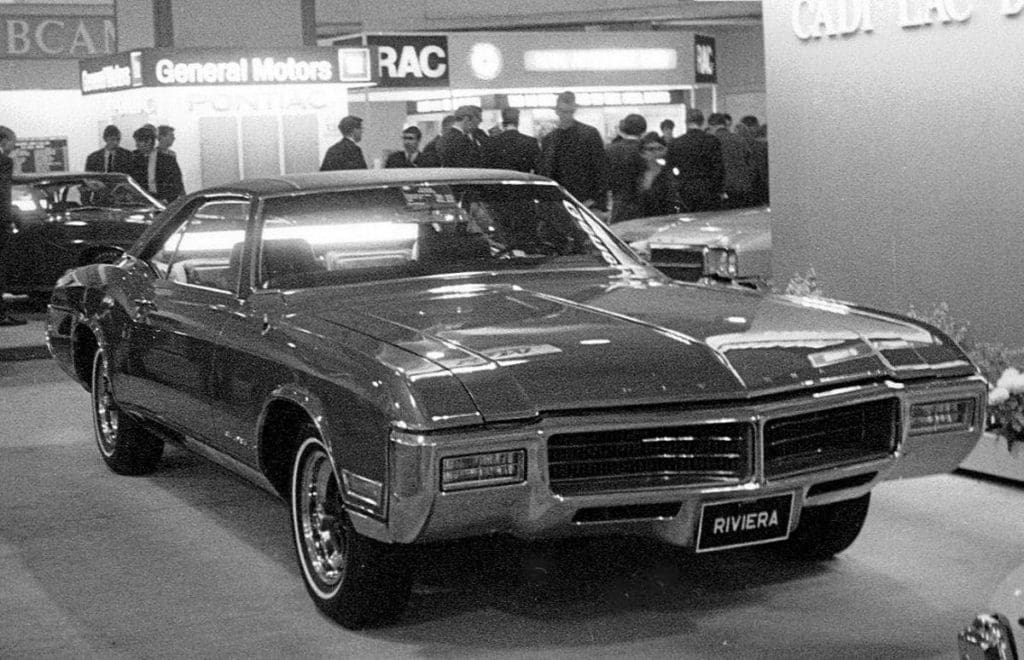
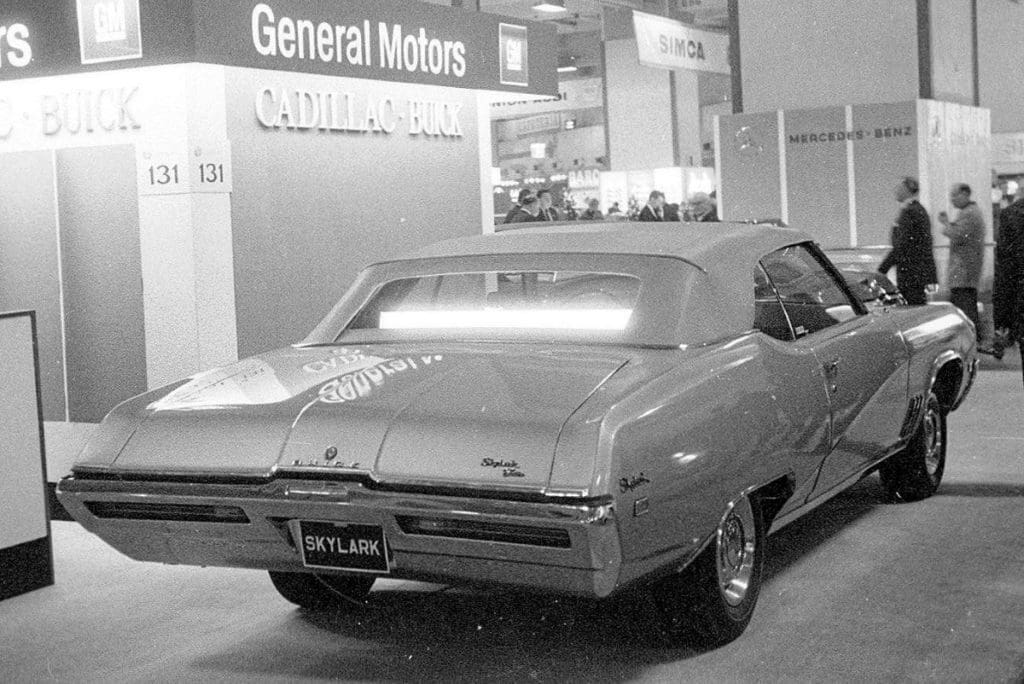
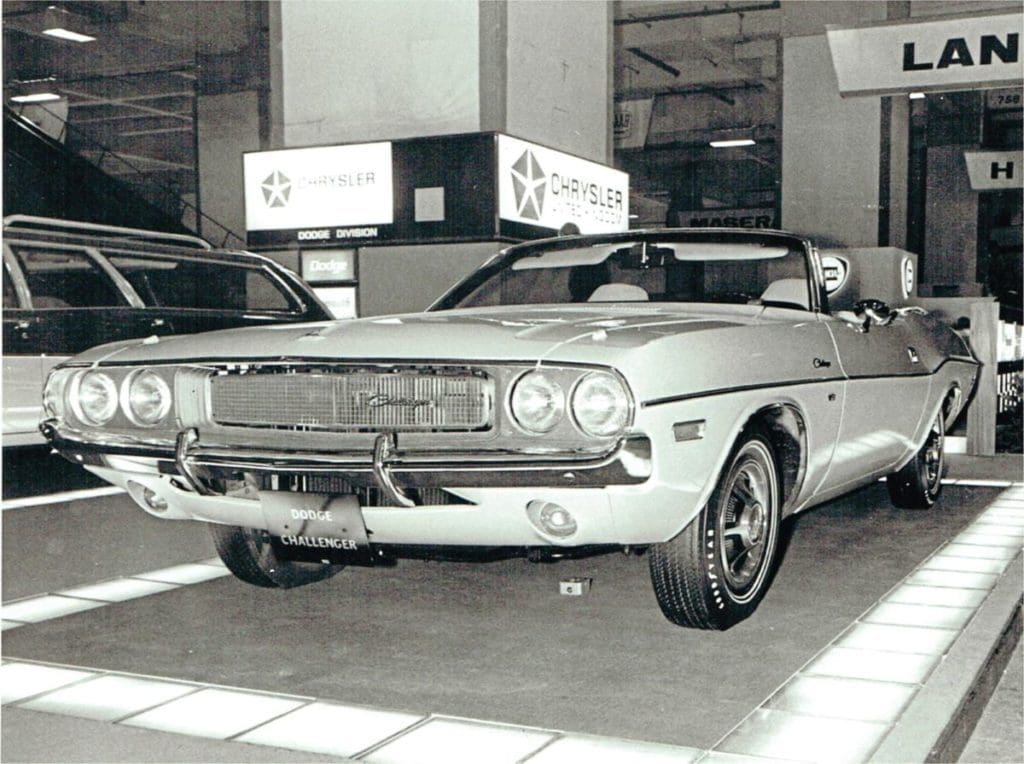
Stands 146 Chrysler and 147 Dodge at the 1969 Earls Court Show contained a curious mix of Mopar products, including a 1970 Dodge Challenger Convertible and a Dodge Monaco Station Wagon. The Australian Valiant had died a death in the U.K. by the early Seventies, and all Chrysler-Plymouth-Dodge products would revert to special-order status via the London Rootes dealer Warwick Wright.
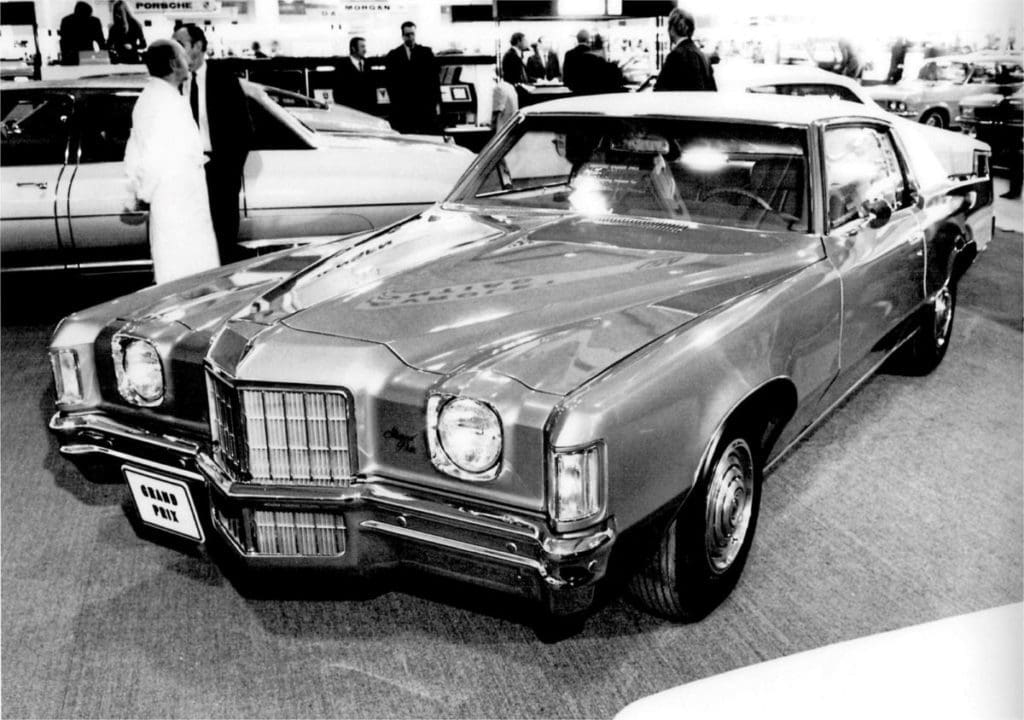
With the 1971 Earls Court Motor Show came more European exhibits and less American car exhibits. This 1972 Pontiac Grand Prix, photographed by an Autocar press photographer on build up day, exemplifies the start of Type Approval, with its blackwall radial tyres, fitted by Lendrum & Hartman to replace the original whitewall bias belted radials, in order to comply with the new regulations.
The end of the Sixties saw the demise of a mini-boom time in the UK for American cars. It was short-lived, but it was fun while it lasted, and Steve Miles diligently captured on film many of America’s finest cars at the Earls Court London International Motor Shows.
By 1978, the Earls Court venue was considered to be inadequate for the Motor Show and moved to the NEC at Birmingham. It continued there until 2004, after which a series of sporadic exhibitions were held at the London ExCel exhibition centre from 2006.


